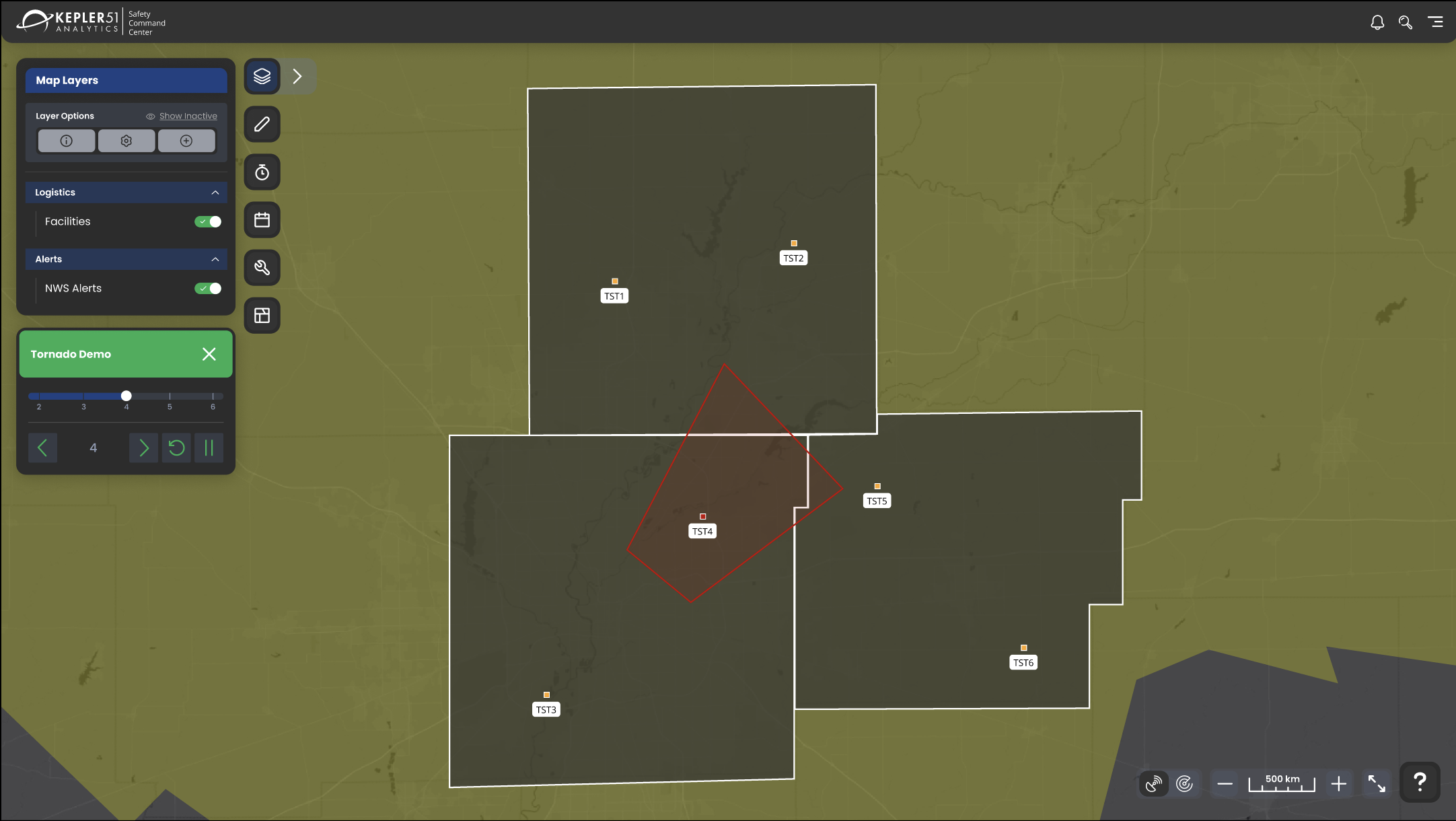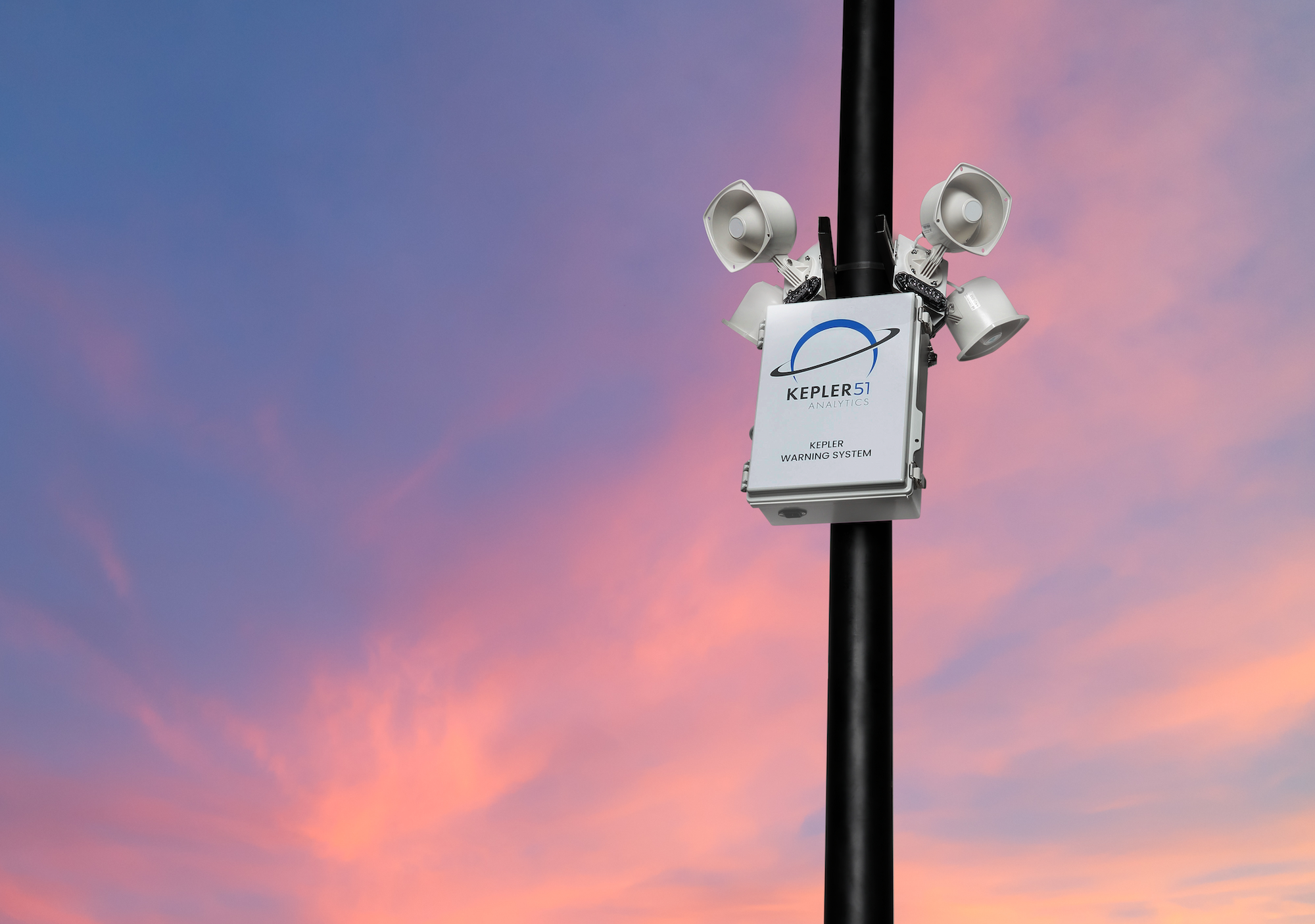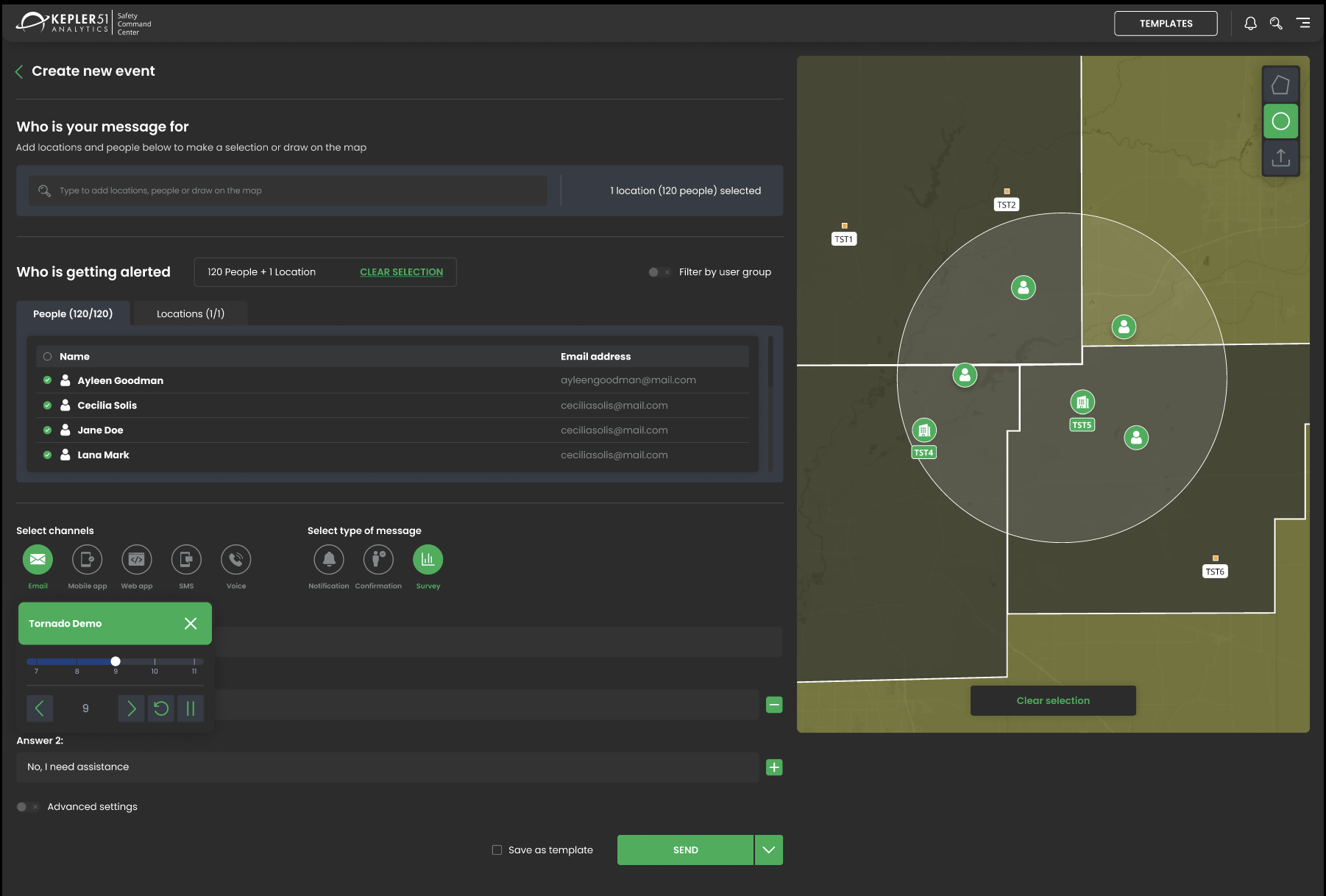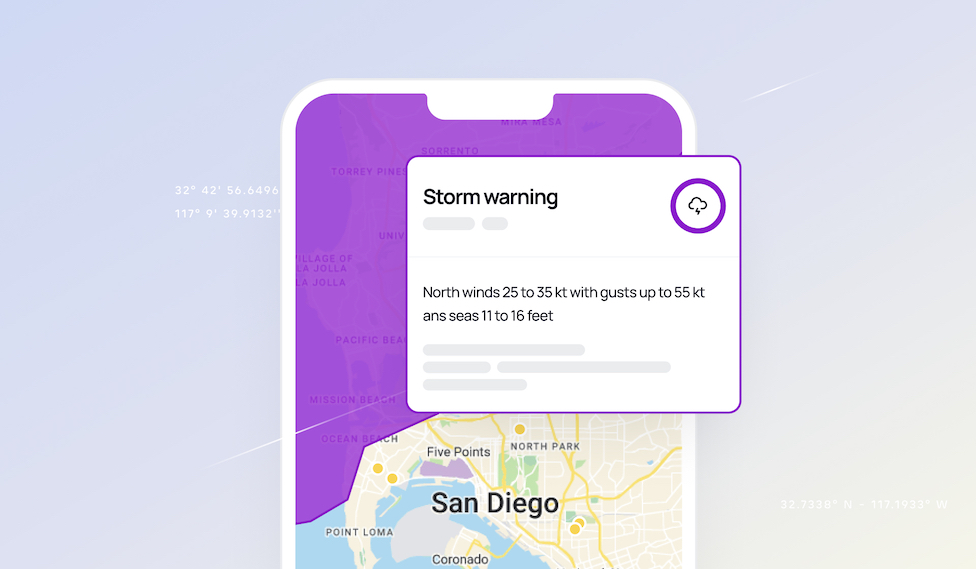


False alarms vs. real threats: better tornado preparedness saves lives and revenue
Picture this: It’s late autumn. A massive storm system with multiple tornado touchdowns sweeps through the Midwest, leaving devastation in its wake. In the storm’s path: a large manufacturing facility with about 50 workers inside.
Site leaders monitoring various weather data sources determine there’s a credible threat and begin to search for emergency protocol instructions. They move through the building, verbally telling employees to shelter in place. Workers begin to leave the floor. But there hasn’t been a drill in a while, and not remembering the designated shelter area, some gather in a storage room.
Minutes later, a tornado tears into the building, causing parts—including the storage area—to collapse, resulting in multiple casualties.
It was a worst-case scenario come to life, where workers paid the ultimate price for ineffective crisis response measures.
The key points of failure: outdated and inadequate detection, preparation and response.
Better preparedness specifically designed for tornadoes is vital as the events become an increasingly common problem. 2024 was the most active tornado season the U.S. has seen since 2017, with 1882 confirmed tornadoes.
And tornadoes aren’t just potentially deadly; they’re expensive. Of the 27 disasters in 2024 that cost a billion dollars or more in loss and recovery, nearly two-thirds included tornadoes.
The nature of tornadoes
To understand why tornado preparedness is a specialized area, it’s important to know how tornadoes differ from other types of storms. First of all, they’re in most cases very fast-developing and short-lived. From the time you get that tornado warning to the time it’s all over, the entire duration of the event, including the storm moving through and dissipating, is perhaps 10 minutes.
While most individual tornadoes are relatively short-lived, multiple touch-downs from one storm system are common, and their behavior is erratic. They’re also surprisingly small: most are a quarter mile wide or even less. The widest tornado on official record, the 2013 El Reno tornado in Oklahoma, reached 2.6 miles in width at its peak, but numbers approaching that are extremely rare. A storm may be 20, 30, even 40 miles wide, but the tornado itself might be 500 meters. The level of destruction they cause, however, is disproportionately deadly.
Tornadoes can be very destructive in a very focused, narrow path. If you look at aerial photos, it looks like a giant dragged their finger through the landscape. This path of destruction is a phenomenon known as ground scouring. In most cases, one side of the storm will have winds that are much stronger than the other side. A tornado can stroll down the street in a neighborhood, and on one side, houses get completely demolished, while on the other side the houses stay untouched.
Conventional tornado tracking and workplace response
Given their nature, traditional methods of tracking, warning about and responding to tornadoes are inadequate. Most people and many businesses rely on the National Weather Service (NWS). When conditions are right for a tornado, the NWS issues a very broad tornado watch that usually comes out well before an event and encompasses a large area.
When their data indicates a more serious risk, the NWS issues a tornado warning based on a polygon that outlines the region where a tornado is likely to form or track. The polygon can be any shape or size, depending on the storm’s projected path, speed and width, surrounded by a broad buffer zone. There’s no standard size of buffer around a tornado warning area — it’s based on the storm’s motion and potential severity, as judged in real time by meteorologists.
According to legacy NWS practices, any area touched by a polygon will be issued an alert. That means sirens may sound at the far end of a county — miles away from its buffer zone, let alone the actual storm — triggering warnings in areas that aren’t at risk.

Cell tower-based Wireless Emergency Alerts (WEA) are a marked improvement, delivering more targeted alarms than traditional countywide siren systems. When the NWS issues a tornado warning, it broadcasts an alert to WEA-enabled phones. Only phones physically located within the warning polygon (as determined by nearby cell towers) will receive the alert.
Still, the buffer zone means cellphone alerts are not necessarily indicative of imminent danger. A very small percentage of people within a polygon will be impacted — less than 10%, in many cases. Businesses that rely solely or mainly on NWS alert systems are at a disadvantage when it comes to actually assessing a credible threat.
Some businesses may supplement NWS data with other systems. One of our clients, prior to using Kepler51, was monitoring about seven different data sources. But if they’re manually monitoring information from multiple outlets, that can lead to slow or inaccurate analysis of threats.
Their reliance on manual methods may also trickle down to communication practices and devices that are being used, like bullhorns or megaphones. Manual response and inadequate training can lead to too-slow responses and tragic consequences. We’ve seen real-life examples where manual methods of communication were utilized, and there were points of failure that translated to real loss of life.
Relying on overly broad alert systems such as the NWS can also mean unnecessary downtime and lost revenue. Even the best forecast models rarely get it right completely, and most of the detection methods used — whether live, radar or spotter networks — have their holes, which can make it hard to tell if a tornado has actually formed. The NWS will often generate a warning even before a tornado is confirmed out of an abundance of caution — but that introduces a lot of false alarms.
Alert fatigue is a very real danger — employees may start to ignore warnings or not take them seriously. There’s a big concern around providing too much or unnecessary information. If you’re alerting to things that aren’t a problem, or don’t require any action, alarms can soon start to be disregarded.
What more accurate and actionable tornado tracking looks like
Luckily for businesses in tornado zones, there are far better options. Automated tornado detection systems can pinpoint areas or risk and identify threats with much greater accuracy than the broad warnings of legacy methods. At Kepler51, our sophisticated analytics models can combine NWS data with our customer’s proprietary weather-related sensors and data, and location-specific data about assets, employees and vehicles. That enables us to only send alerts to the devices and people that are in that more targeted area. It’s a proven method that can not only save lives but prevent downtime. It may mean, for example, that you shut down one instead of four buildings — or none at all, if they aren’t actually in an area of risk.

Your tornado preparedness checklist
Being fully prepared to respond safely to a tornado involves much more than having designated shelter areas. It’s about having the technology, infrastructure and training in place to effectively communicate about and swiftly respond to tornadoes. Here’s what we typically recommend and help our clients put in place.
- Set up multichannel alerts: Alerts should simultaneously deploy via voice-to-text on large screens, lights and sirens, public address systems, speakers, mobile devices, and messaging apps and other company communication channels (Slack, Teams, etc.). Multichannel alerts ensure all personnel receive necessary info from shelter-in-place to the all-clear.

- Install safety equipment: Businesses should make sure they amply stock first aid kits, defibrillators and essential emergency supplies, and make sure they’re accessible and known to every worker.
- Put actionable plans in place: Emergency response procedures should be simple to understand and easily available in digital formats.
- Implement interactive maps: Digital maps should be accessible from every connected device, showing shelter locations and emergency equipment. Maps should also be interactive so people can share information during an emergency.
- Enable automated alerting and shutdowns: Defined protocols and automated systems can help businesses safely power down sensitive equipment when certain thresholds or conditions are met.
- Educate staff: Knowledgeable staff is the most powerful component to a successful response. Businesses should provide detailed training on tornado formation, warning systems, and safety policies and procedures.
- Hold regular drills: Even the best crisis response plan can fail in the heat of the moment if workers aren’t familiar with what they’re meant to do. You need to ensure that if something happens, they’re not asking questions; they know what to do and where to go. Running drills at regular intervals is vital, as is capturing data to assess the success of each one.
Tornado Response Plan
When an event actually occurs, all of the detection and preparation measures should set employees up to follow a detailed plan of action quickly and precisely. Knowing that alerts are pinpointed and accurate will help staff take every notification seriously. Thorough training will help them follow the steps memorized during drills.
- Communicate instantly to every employee: Instructions will be automatically dispatched to all affected parties on multiple channels with clear, easy-to-follow steps. Workers can use a variety of communication methods (depending on your business) — digital displays, messaging apps and interactive maps — for real-time coordination and status updates, confirming safety, updating about the developing situation or requesting emergency assistance.

- Evacuate and shelter: Clear messaging and thorough training help workers follow designated shelter routes quickly and confirm their safety.
- Monitor shutdowns: Automated processes can trigger shutdowns of sensitive equipment. Staff can confirm whether equipment shutdowns execute correctly.
- Automate recordkeeping: The system should capture data on sheltering times, safety compliance and equipment status, creating a record for post-event needs.
- Follow recovery protocol: When the all-clear is given, staff will follow procedures for assessing damages, restoring operations and resuming business functions.
- Review the incident and make improvements: Data collected during the event will facilitate post-event analysis and accurate reporting, and help the business
- make refinements to their response plan before the next disaster.
Weathering any storm
The increasing frequency and severity of tornadoes makes an already dangerous prospect a severe threat to both worker safety and business operations, but the right technology and plan can provide peace of mind. At Kepler5, we’re passionate about making sure everyone makes it home at the end of their workday.
1 https://disasterphilanthropy.org/disasters/2024-us-tornadoes/
2 https://journals.ametsoc.org/view/journals/wefo/30/3/waf-d-14-00152_1.xml
3 https://www.spc.noaa.gov/misc/about.php
4 https://survive-a-storm.com/blog/how-to-gauge-for-tornado-threat-watches-warnings-and-polygons-explained/
5 https://www.weather.gov/wrn/wea

